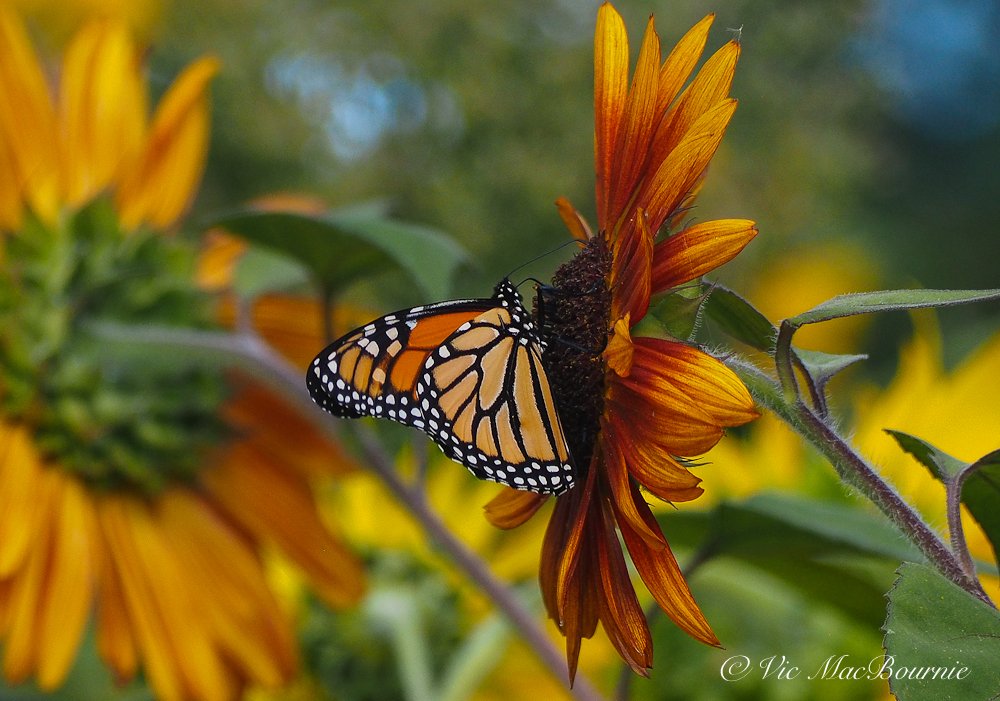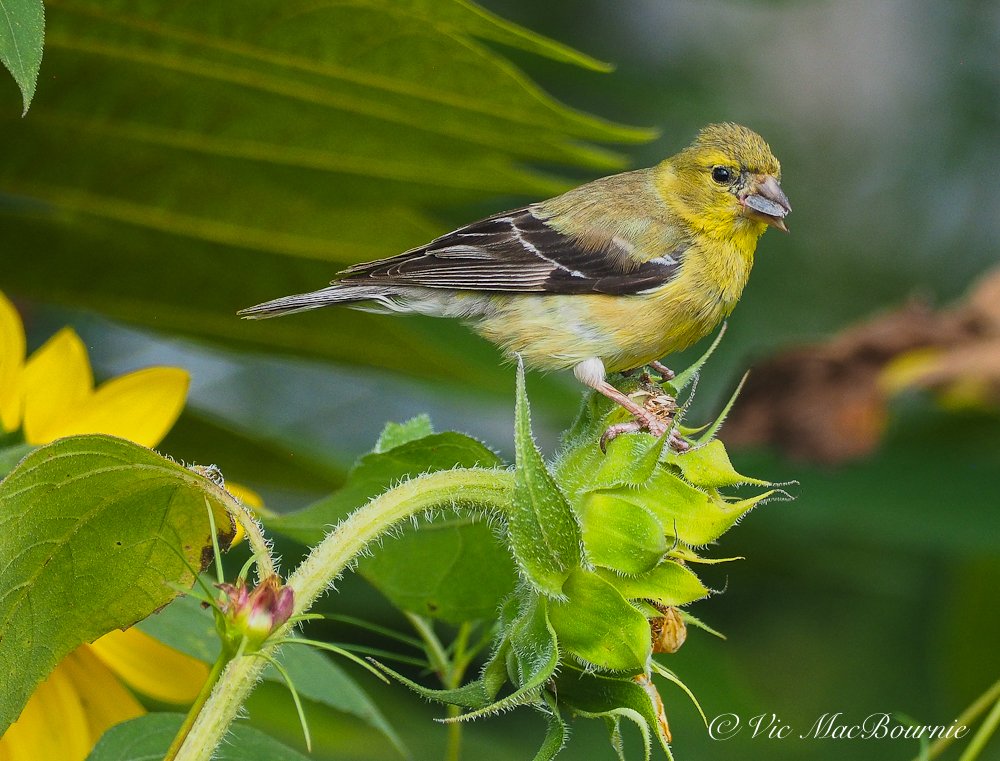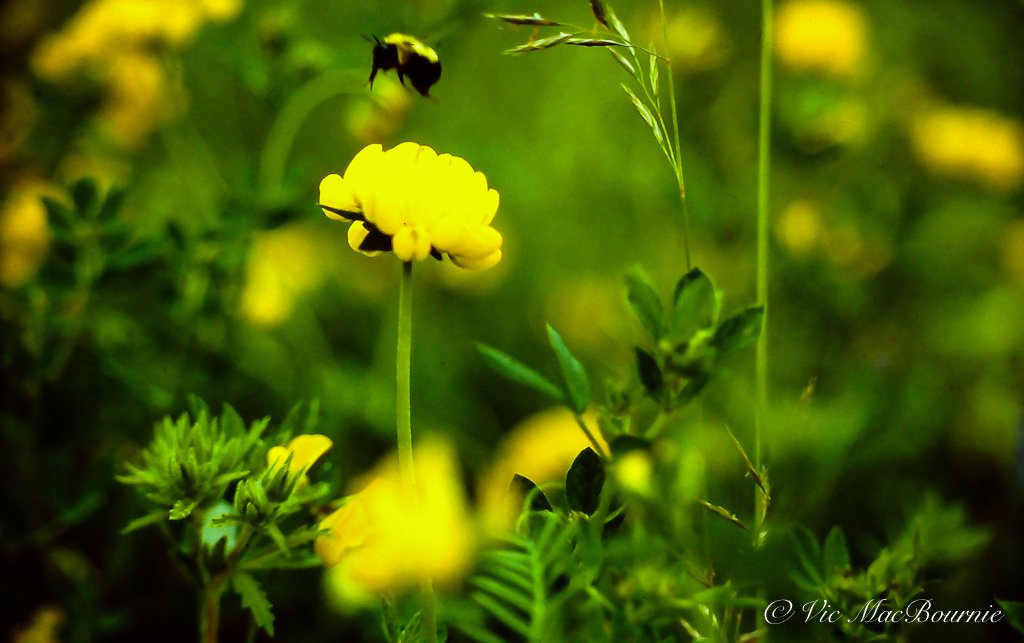Tips to create a mini meadow-inspired garden
Can I have a meadow garden in a small space?
Just like you can create a woodland-inspired yard in today’s smaller urban backyards, so too can you find a sunny spot in your backyard to create a meadow-inspired garden that will bring you many of the same joys that a full-sized meadow offers.
That includes a natural, ever-changing planting with an abundance of colour and texture that is a magnet for birds, butterflies, bees and other pollinators.
In a small garden, you may not be able to have the meadow of your dreams, but with the right plants you can have one most gardeners only dream about. And creating it is relatively simple.
I have been working on creating a meadow-inspired garden across a small hill located at the back of our yard that gets strong afternoon sun despite being under the canopy of two old crabapple trees.
By transplanting native grasses such as Little Bluestem, Black-eyed Susans, Purple Coneflowers, native sunflowers and other meadow plants, I have been able to fill in a good portion of the hillside garden. I expect to see some positive results from my efforts this summer as the plants begin to grow in and take shape. More native plants and seeds will follow this season to help fill in any empty areas. I’m also counting on nature to do its thing as well to help me along the path to a lovely little meadow-inspired garden.
In their book, Garden Revolution, How our Landscapes can be a source of Environmental Change, Larry Weaner and Thomas Christopher, write: “Native meadow is likely the best answer to North America’s over reliance on lawn, a means of saving the enormous quantities of water, fertilizer, herbicides, pesticides, and fossil fuels annually invested in the cultivation of turf. Unlike shrublands and forests, meadows can be established from seed in a relatively short time to gravitate toward open space and expansive views, attributes not common in a forest or shrubland.”
The authors ask why, then, does grass continue to dominate our landscapes?
They point to the quality of seed that has been sold in the past to create these meadows and the desire by homeowners to have an instant meadow in a single season.
“Meadows can work, but only if the gardener selects plants and uses techniques that reflect the local habitats and ecological processes that will affect their survival and proliferation.This is why successful meadow will look quite different in different regions.”
Goldfinch works on a sunflower in a naturalized flower border.
For more on creating a naturalized meadow and wildlife habitat, be sure to check out my post Fields of Gold: Sunflowers and Goldfinches.
Their approach to creating a successful meadow is a fascinating look at working with nature using native plants and a more ecological approach. Although it is aimed at creating and maintaining large meadows with the least amount of work, their approach is certainly one that works in a mini meadow-inspired garden.
If you have visions for a larger meadow, Garden Revolution is a must read gardening guide to creating meadows and other inspirational gardens by working with native plants.
If you are interested in exploring this approach in greater detail, check out my more extensive post on Garden Revolution here.
• For more on creating a meadow garden, check out this comprehensive post on how Garden designer Angela den Hoede created one at her home.
• If you are looking for ideas on using low-growing ornamental grasses, be sure to check out my post on Five low-growing ornamental grasses.
The following, however, are some tips on creating your mini meadow-inspired garden.
A monarch takes a moment to work on the flower of the common thistle. Letting your meadow go a little “weedy” can attract some beautiful friends for a visit.
What’s the difference between a Meadow or Prairie garden?
Whether you choose a meadow-inspired garden or a prairie-inspired garden, the process is somewhat similar.
• If you want mostly colourful flowers, then a meadow-inspired garden is the direction you want to go. Use ever-blooming annuals to get your garden going. In fall dig them into the garden and replant for next year. Or plant your meadow with perennials that also flower generously (oxeye daisies, coreopsis and black-eyed Susans). Eventually a combination of the two will give you a good start on your continuous flowering meadow.
• If you are more a fan of grasses than you might want to lean to a more prairie look. Grasses rather than flowers hold centre stage in the prairie garden. In mid summer, however, the prairie leaps into bloom with wildflowers that complement the height and habit of grasses.
• A meadow planting is shorter than the prairie-inspired garden that features grasses like Big Bluestem, compass plant and others that can easily reach head height and beyond. If you still like the prairie look, there are plants that stay on the shorter side such as Prairie Dropseed, grama grass, foxtail barley, butterfly weed and blanket flower to name just a few.
• In a meadow garden, more attention will have to be paid to maintaining the existing flowers because these gardens tend to want to move toward grasses unless given proper guidance.
It won’t take long for pollinators like this native bumblebee to find your mini meadow.
Six steps to a Meadow Startup
Sally Roth, in her informative book Natural Landscaping: Gardening with Nature to Create a Backyard Paradise, provides the following steps to create a Meadow-inspired garden.
Strip or smother existing sod.
Till or turn the soil until it is smooth.
Water the area thoroughly with a fine to medium spray.
Wait for weed seeds to sprout. Slice off with the blade of a hoe, taking care not to disturbthe soil. Repeat as often as you have patience for.
Sow meadow garden seed.
Weed until meadow seedlings are well on their way.
For a fast Meadow mix from seed, Roth suggests the following plants be included
Baby blue eyes: (Nemophila menziesii) This delicate low-grower has charming blue flowers above a ferny foliage.
Bachelor’s-Buttons: (Centaurea cyanus) Branched and bushy plants with long-lasting blooms in blue, pink, rose, white and deep red-purple.
California poppy: (Eschscholia californica) Vivid orange flowers that form cups above lacy gray-green foliage. Pink and purple cultivars are also available.
Calliopsis: (Coreopsis tinctoria) A graceful, knee-high plant with abundant gold, russet, mahogany, or two-toned daisies and ferny foliage.
Corn cockle: (Agrostemma gitbago) Simple, silky flowers in vivid magenta-purple atop a branching midheight plant with grayish foliage.
Other plants to consider include: field poppy, Scarlet flax, Cosmos, Tickseed, sunflower.
If a more perennial style garden is more to your liking consider the following plants
Birdfoot violet, Black-eyed Susans, Bluets, Butter-and-eggs, Butterfly weed, Foxtail grasses, Goldenrods, Heath aster, Heliopsis, Little Bluestem, Moth mullein, New England Aster, Oxeye daisy, Panicled aster, Wild bergamot, Winged sumac and Yarrows.
If you are on the lookout for high quality, non-GMO seed for the Pacific North West consider West Coast Seeds. The company, based in Vancouver BC says that “part of our mission to help repair the world, we place a high priority on education and community outreach. Our intent is to encourage sustainable, organic growing practices through knowledge and support. We believe in the principles of eating locally produced food whenever possible, sharing gardening wisdom, and teaching people how to grow from seed.”
Tips to attract birds to your mini meadow
Remember to plant the flowers that set seeds that you know will attract birds later in the season. Both annual and perennial sunflowers (see story) are good for starters, as are cosmos and coneflowers.
Allow the “weeds” to take root. The seeds and or fruits of lamb’s quarters, pigweed, pokeweed and ragweed will attract a variety of birds.
Leave areas of the garden undisturbed as much as possible. These are excellent areas for birds to tuck their nests in to shrubby plants or even grasses.
Plant perennials that spread into large colonies to create cover for the birds.
Leave the leaves and don’t cut your meadow until spring or, if necessary, late winter so that birds can seek food and shelter in standing plants throughout the cold months.
Butterflies you may attract to your meadow-inspired garden
Depending on where you garden, you can expect to see many of the following butterflies in your mini meadow-inspired garden.
Buckeye
Cabbage White
Common blue
Common Sulphur
European skipper
Gray hairstreak
Indian skipper
Meadow fritillary
Monarch
Orange sulphur
Painted Lady
Pearly crescentspot
Red admiral
Red-spotted purple
viceroy
Zebra swallowtail
Much of the information from this article is from Sally Roth’s informative book Natural Landscaping. For more in depth information check out her gardening book.





